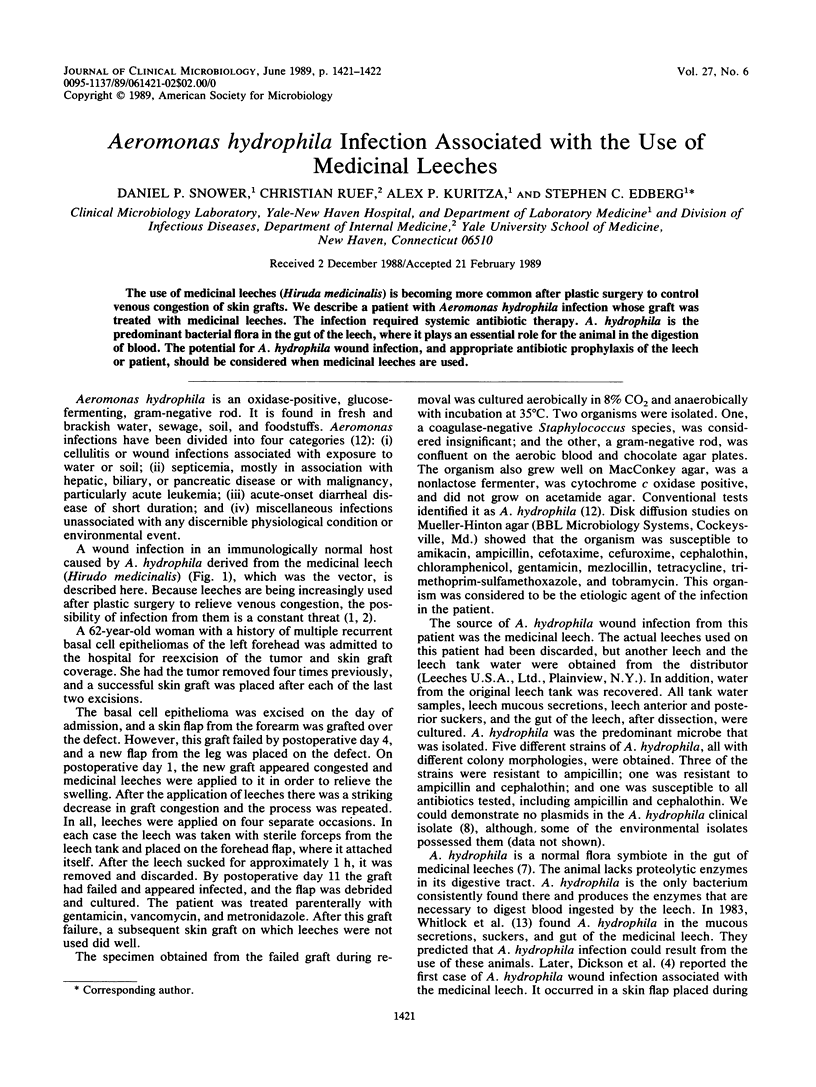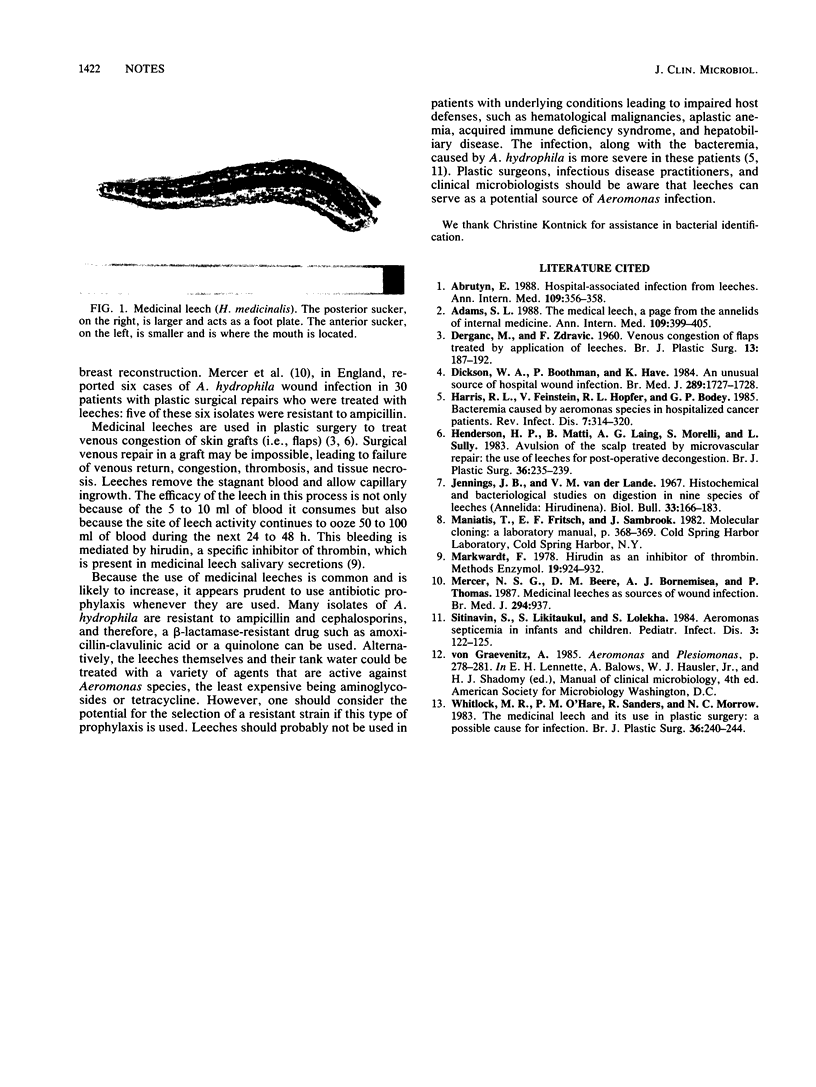Abstract
The use of medicinal leeches (Hiruda medicinalis) is becoming more common after plastic surgery to control venous congestion of skin grafts. We describe a patient with Aeromonas hydrophila infection whose graft was treated with medicinal leeches. The infection required systemic antibiotic therapy. A. hydrophila is the predominant bacterial flora in the gut of the leech, where it plays an essential role for the animal in the digestion of blood. The potential for A. hydrophila wound infection, and appropriate antibiotic prophylaxis of the leech or patient, should be considered when medicinal leeches are used.
Full text
PDF

Images in this article
Selected References
These references are in PubMed. This may not be the complete list of references from this article.
- Abrutyn E. Hospital-associated infection from leeches. Ann Intern Med. 1988 Sep 1;109(5):356–358. doi: 10.7326/0003-4819-109-5-356. [DOI] [PubMed] [Google Scholar]
- Adams S. L. The medicinal leech. A page from the annelids of internal medicine. Ann Intern Med. 1988 Sep 1;109(5):399–405. doi: 10.7326/0003-4819-109-5-399. [DOI] [PubMed] [Google Scholar]
- DERGANC M., ZDRAVIC F. Venous congestion of flaps treated by application of leeches. Br J Plast Surg. 1960 Jul;13:187–192. doi: 10.1016/s0007-1226(60)80036-7. [DOI] [PubMed] [Google Scholar]
- Dickson W. A., Boothman P., Hare K. An unusual source of hospital wound infection. Br Med J (Clin Res Ed) 1984 Dec 22;289(6460):1727–1728. doi: 10.1136/bmj.289.6460.1727. [DOI] [PMC free article] [PubMed] [Google Scholar]
- Harris R. L., Fainstein V., Elting L., Hopfer R. L., Bodey G. P. Bacteremia caused by Aeromonas species in hospitalized cancer patients. Rev Infect Dis. 1985 May-Jun;7(3):314–320. doi: 10.1093/clinids/7.3.314. [DOI] [PubMed] [Google Scholar]
- Henderson H. P., Matti B., Laing A. G., Morelli S., Sully L. Avulsion of the scalp treated by microvascular repair: the use of leeches for post-operative decongestion. Br J Plast Surg. 1983 Apr;36(2):235–239. doi: 10.1016/0007-1226(83)90099-1. [DOI] [PubMed] [Google Scholar]
- Mercer N. S., Beere D. M., Bornemisza A. J., Thomas P. Medical leeches as sources of wound infection. Br Med J (Clin Res Ed) 1987 Apr 11;294(6577):937–937. doi: 10.1136/bmj.294.6577.937. [DOI] [PMC free article] [PubMed] [Google Scholar]
- Sirinavin S., Likitnukul S., Lolekha S. Aeromonas septicemia in infants and children. Pediatr Infect Dis. 1984 Mar-Apr;3(2):122–125. doi: 10.1097/00006454-198403000-00008. [DOI] [PubMed] [Google Scholar]
- Whitlock M. R., O'Hare P. M., Sanders R., Morrow N. C. The medicinal leech and its use in plastic surgery: a possible cause for infection. Br J Plast Surg. 1983 Apr;36(2):240–244. doi: 10.1016/0007-1226(83)90100-5. [DOI] [PubMed] [Google Scholar]



